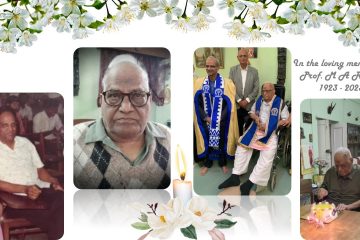Parama Mukhopadhyay tries to answer why women lagging behind in the mining sector in India

“What is your department?”
“Mining Engineering”
“Mining? Are girls even allowed in Mining Engineering? Will you get any job in mining after you finish your study? Why mining? Is it suitable for girls?”
These questions – that come with raised eyebrows – are common for us while discussing our subject area with others. Us – the WOMEN in Mining in India! The above-mentioned questions are well-justified if we consider the number of women and job opportunities for them in the mining sector, not only in India, but worldwide.
Let’s focus on the Indian scenario. Our country has different types of mineral reserves, and the mining industry contributes a sizeable amount to the country’s economy and generates a good number of employment opportunities every year. Unfortunately, since historical times, this sector is highly male-dominated and even hostile towards women. Though mineral production and overall employment generated by the sector have gone up exponentially, involvement of women has fallen further. In FY18, the country produced minerals worth Rs 1.13 lakh crore, registering an increase of 13 per cent over the previous fiscal. Compare this with the other figure. Women are said to account for only 4.4% (24,294 females) of the total mining workforce, which is considerably less compared to women labor force participation rate (22.5%) in India.Not only the numbers, but the job quality and salary amount is significantly poor for women compared to their male co-workers. Women labourers are paid less than males and this is because jobs that require technical skills are never offered to women with an assumption that they are not suitable for this.
Where are we going wrong??
What could be the possible reasons of such tragic situation of women in mining sector? Discriminating laws, historical patriarchal myths, issues with clothing suitable for mine works, so-called masculine- not-suitable-for women-job, lack of proper safety and security, lack of basic facilities including toilets, lack of technical skills are the primary reasons prohibiting females to join this industry. Laws in our country had always prohibited girls to take up jobs in mining sector. According to Mines Act, 1952, women were restricted to be employed in opencast mines during night shifts (7 pm to 6 am) and totally barred from working in underground mines. Later females were permitted to work in mines only in day shifts (6 am to 7 pm).
In February 2019, the labour ministry of Central Government allowed female workers to work in open cast mines round the clock and also in underground mines even in night shifts. The implementation of this rule has to strictly follow few rules for underground mines that include safety and security of female workers. According to this new law, the deployment of female workers in night shift (7 pm to 6 am) can only be done for technical, supervisory and managerial work that does not need continuous presence. She should be in a group of not less than three. Owner of the mine should have a written consent from that woman and adequate occupational safety, security and health benefits has to be provided. Also this deployment will be subject to the framing and implantation of Standard Operating Procedures that will follow the guidelines issued by Chief Inspector of Mines at regular intervals.
Execution of this new rule will undoubtedly bring more gender equality and more job opportunities for females in mining sector. But, still women are restricted to choose their favourite job type in underground mines, as they can only participate in “technical, supervisory and managerial work”. We still have the Coal Mines Regulations, 1957 that states no adolescent or woman will descend or ascend a shaft in a cage or other means of conveyance unless accompanied by one or more adult males. It clearly implies that working in underground mines for women will depend on the availability of male workers. This surely make women less favourable as a candidate for underground mine jobs and they have to restrict themselves to choose option in office jobs above ground or be involved in opencast mines.
But, at least changes have begun!
Why are women lacking skills to work for mining industry? This is because, not many courses or workshops are being offered to girls/women that can help develop required skills to work in mine exploration areas. Currently, three IIT’s – IIT KGP, IIT BHU and IIT(ISM) Dhanbad are offering admissions to girl students in Mining Engineering in B.Tech. M.Tech. and PhD. [Lucky to be part of IIT Kharagpur!]. Also, in 2015, Anna University allowed the same. But, even after offering courses, due to the lack of awareness among girls about job prospects for mining and about recent changes in laws in favour of women, mining is still not on the preferred list of courses for girls.
What to do now? Changes in laws that create more jobs, assurance on safety and security, suitable courses to develop skills and spreading awareness among girls to encourage them to consider mining as a prospective industry for career. Changing process will take time, but surely will succeed.
I would like to end my article by narrating the inspiring story of Dr. Chandrani Prasad Verma, India’s first female mining engineer and currently holding the position of Principal Scientist at the Central Institute of Mining and Fuel research at Nagpur. Dr. Chandrani Verma qualified her B.Tech. as a mining engineer at 1999. Her qualifying year clearly indicates that she started her journey at this field years before the amendment of laws were implemented and institutes started opening their doors for female students in mining courses.
Being passionate about pursuing a career in this field, she had to fight a case in court for one year just to be enrolled in a college to study Bachelor’s degree in Mining. In 1996, she was admitted in Mining Engineering as ‘special case’ in Ramdeobaba Engineering College in Nagpur and in 1999, she graduated and became India’s first female mining engineer. Even after graduating successfully, doors for jobs in mines did not open for her, but her determination helped her to continue her work in this field. Besides working as a lecturer in college, she completed her M.Tech. in 2006 and completed Ph.D. on Web Pillar design in Highwall Mining from Visvesvaraya National Institute of Technology (VNIT), Nagpur in 2015. She was the only woman candidate during her interview at CSIR – Central Institute of Mining & Fuel Research. Her interviews were hesitating to select her, as her job will require regular visit to underground mines, but her passion for mining impressed them and she was selected as a scientist. We are proud of her. She opened the doors for many other girls to choose the dream of pursuing a career in mining.
Finally, we, the women in mining, are hopeful that the administrations, lawmakers, educationists, professors and our society will come forward together to end the long-prevailing gender discrimination in this particular field and support us to become more and more successful in this field.
Parama Mukhopadhyay (16MI91R05)
Research Scholar, Mining Engineering Department,
IIT, Kharagpur




[…] are still enough restrictions in place to stall women’s full participation in hands-on mining (Read her story here). True, with the restrictions in place in order to ensure safety for women, and the lack of other […]